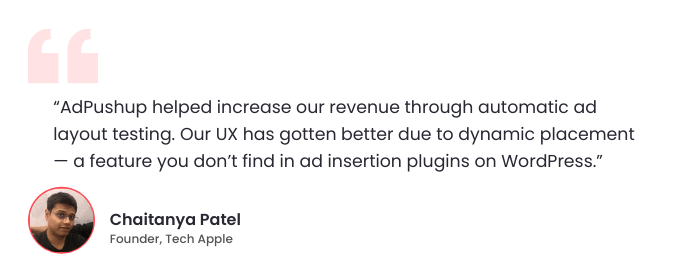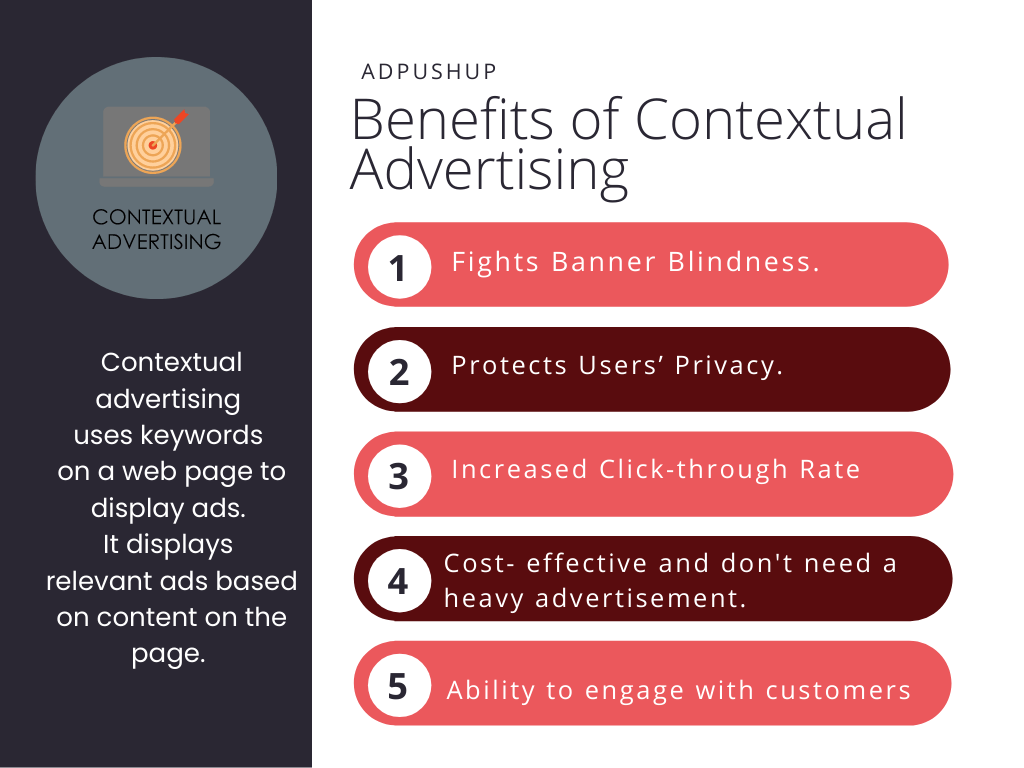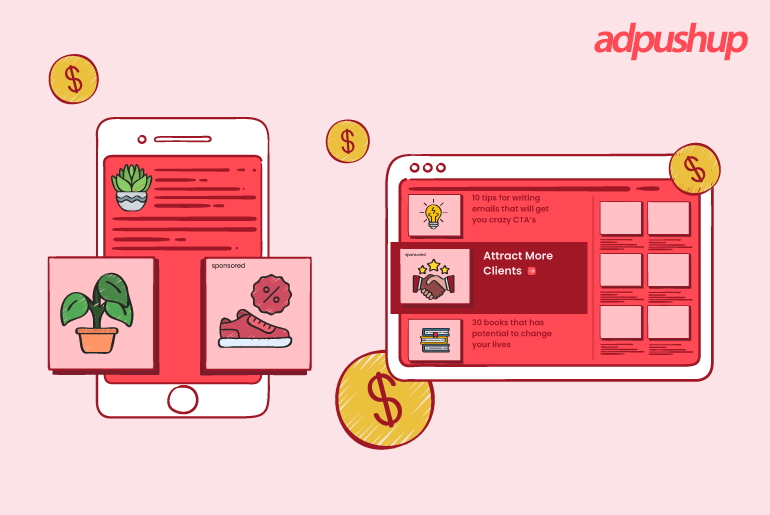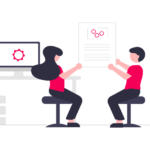Learn how contextual advertising can supercharge your ad revenue. Discover expert tips, best practices, and real-world examples.
Have you ever encountered an advertisement on a website that is so pertinent to what you’re interested in that you find yourself exclaiming, “Wow, that’s exactly what I was looking for!” If such is the case, contextual advertising is the one to be credited. Lately, there’s a lot of buzz surrounding contextual advertising, and it makes sense considering how creatively it helps advertisers tap into that coveted customers’ attention span.
Thus, many advertisers are employing contextual advertising to scale their business.
According to a study conducted by GumGum, contextually relevant ads generated 43% more neural engagement. In fact, users recalled contextual ads 2.2x better than other ads.
Moreover, third-party cookie apocalypse and its impact on programmatic revenue, has also made publishers shift their focus to contextual targeting.
But, what is contextual advertising?
In this post, we have tried helping publishers understand “what is contextual advertising”, its benefits, how it works, and so much more.
Without further ado, let’s get started. Let’s first have a look at contextual advertising definition.
What is Contextual Advertising? (contextual advertising meaning)
So, what does contextual advertising mean? Contextual advertising is the technique of displaying advertisements on websites based on the content of those pages. In simpler words, it is all about targeting your audience at the right time and on the right platform.
The process is called contextual targeting, which includes engaging the audience, learning about their interest, and providing them with pertinent information.
For example, a page that emphasizes skincare products will utilize the algorithms underlying a contextual advertising solution to add relevant ads. These ads are tailored to the page’s context, whether it be a video, article, or online merchant selling them.
Now that we know what is contextual advertising, let’s have a closer look at contextual advertising examples.
Top Contextual Advertising Examples
Here’s an example to understand contextual display advertising better.
1. The Wall Street Journal
The screenshot below shows a Wall Street Journal web page with the primary story of rising fuel demand.
The ad on the sidebar is for Winergy Gearboxes, a renewable energy product. Thus, this contextually relevant ad makes much sense next to content related to depleting natural resources.


2. Verizon
As mentioned earlier, contextual display advertising is based on the surrounding content on the web page you are viewing. If you were to visit a technology-based website, you might see an ad related to gadgets.
Here’s another contextual advertising example. The following post by Verizon promotes a new Samsung phone on the technology publisher TechCrunch.
3. Youtube
To see another contextual advertising example, head over to YouTube and search for a video on “how to bake a cake.” As you search for the tutorial, you’ll notice ads for baking supplies, cooking tools, or grocery stores appearing before or during the video.
These ads are not randomly placed; they are selected based on the content of the video. This is a contextual advertising example at its finest—showing relevant ads to viewers who are already interested in baking.
By aligning ads with the video’s topic, advertisers can effectively reach a niche audience, making the ads more meaningful and engaging. This strategy enhances the viewer’s experience by providing useful and relevant advertising without the need for intrusive tracking.
So these were some of the contextual advertising examples, that said, let’s have a look at contextual advertising works.
How Contextual Advertising Works?
Contextual advertising uses keywords on a web page to display ads. Unlike behavioral targeting, where tracking pixels and cookies are used, contextual targeting displays relevant ads based on content on the page.
This has a positive impact on users browsing the web page. The ads remain contextually relevant, thus getting better viewability.
Top 5 Advantages of Contextual Advertising
Contextual advertising comes with an umpteen number of benefits, here are 5 of them:

1. Fights Banner Blindness
Banner blindness is a common phenomenon in which users have learned to ignore ads subconsciously. However, contextually targeted ads can help fight that simply by their relevance.
For example, a movie review website serving ads for a movie ticket booking website makes more sense than it serving ads related to cars.
In a study by Infolinks conducted on fighting banner blindness, contextually relevant ads of lesser-known brands were recalled 82% more by people as opposed to ads of famous brands but irrelevant to page content.
Ad placement matters. An ad placed next to/between relevant content immediately increases its value and therefore, offers a higher CTR potential.
2. Protects Users’ Privacy
The best part about contextual advertising is that it does not partake in exploiting user data for tracking online behavior. All the ads generated through contextual targeting make use of keywords, helping publishers in building trust among their users.
Contextual targeting helps publishers to comply with privacy laws such as the GDPR, CCPA, and others.
3. Increased Click-through Rate
Contextual advertising benefits all: users, publishers, and brands. It benefits users by introducing them to relevant products through targeted ads. When users view relevant ads, ad viewability piques and there is an increased likelihood of a high click-through rate.
4. Cost-Effective & Don’t Need Heavy Advertisement
Contextual ads are more effective and economically friendly than conventional ads- you only pay for the ads that people click on rather than displayed ads. These ads also come with a specialized message and link to shop.
5. Ability to Engage with the Customers
Lastly, it allows brands to converse and engage with customers. You may interact with them in an instructive and useful way by giving them information that is pertinent to what they are searching for. This increases your company’s visibility and facilitates a stronger connection with potential clients. All thanks to the contextual targeting.
6. Enjoy Cookie-Less Advertising
Speaking of Cookies, it is like addressing the elephant in the room. Everybody knows that cookies are now classified as personal information by the General Data Protection Regulation (GDPR). As a result, there are now numerous legal implications for cookie advertising.
Thus, contextual advertising can be a cool breeze since it does not need any cookies to operate. Hence, contextual advertising is now a go-to option for many.
What are the Disadvantages of Contextual Advertising?
Although there are not many disadvantages of contextual advertising, there are a few potential pitfalls that website owners should be aware of. Contextual ads can be distracting to website visitors, and if they are poorly placed, they can disrupt the flow of content and annoy consumers. This is not a problem that is limited to contextual ads but can occur with any type of website.
Google AdSense and Contextual Advertising
Google AdSense relies on the Google Display Network (GDN) or approved Google-certified ad networks to serve advertisements. It leverages bots to analyze web pages for relevant keywords and content before displaying contextual ads.
In addition to text analysis, Google AdSense leverages images and their associated content to enhance accuracy for ad targeting.
When opting for automated advertising, the ad publisher furnishes contextual data such as categories, tags, content, keywords, and URLs to the ad server.
Subsequently, this data is relayed to ad networks, exchanges, or Supply Side Platforms (SSPs), which in turn provide it to Demand Side Platforms (DSPs).
The DSPs are ultimately responsible for delivering the contextual ads.
On the contrary, in header bidding, publishers provide contextual information to a wrapper. This wrapper then conveys the information to exchanges or Supply Side Platforms (SSPs) using ad requests. The details are transmitted in the shape of bid requests to pertinent Demand Side Platforms (DSPs).
Contextual vs Native Advertising [Explained with Examples]
contextual vs native advertising sounds like a similar concept, but they are very different in nature when it comes to targeting, format, and the user-experience.
Let’s have a quick look at contextual advertising first.
Contextual Targeting
As we mentioned earlier, contextual advertising is served by keeping the relevant keywords or search queries used in the content or a web page. For instance, a cooking website might display ads for kitchen appliances, while a tech news site could show ads for the latest gadgets. Contextual targeting used in contextual advertising ensures that ads are more likely to interest the reader.
However, contextual advertising can sometimes seem like intrusive advertising. Although the cotextual ads are relevant, they are served in various formats like pop-up, interstitials, and large banners, which can be interruptive and distracting for the users.
Native Advertising
Native advertisements are designed with an aim to blend naturally with the content and elements surrounding the web page. Unlike traditional display ads, native ads aim to provide value to users while subtly promoting a brand.
These ads blend seamlessly within the web page, thus, they are less obstrusive and distracting.

On one hand, it’s great for blending in with the crowd and capturing attention, but on the other, there’s a risk of native advertising looking like a sneaky salesperson if it’s not done right. It’s essential to be crystal clear about what’s an ad and what’s not to keep readers happy and trust intact. Plus, while native ads can be super engaging, reaching as many people as possible can be a challenge since they’re tied to specific platforms. It’s a balancing act between looking authentic, being transparent, and getting your message out there.
Contextual Advertising vs Behavioral Advertising
Publishers often find themselves contemplating over contextual advertising and behavioral advertising?
There is a sudden surge in interest for contextual ads, and for good reasons. It is a great alternative to behavioural targeting for surviving third-party cookie deprecation. But without this context, neither type can be deemed superior.
Let’s have a look at contextual advertising vs behavioral advertising in a nutshell. Here is a table showing significant differences between the two:
| Category | Contextual Advertising | Behavioural Advertising |
| Tracking | Makes use of keywords on a web page to display relevant ads | Uses cookies which track online behaviour for displaying ads |
| Data privacy | Effortless privacy compliance as ads use keywords | Requires additional step of obtaining user content |
| Accuracy | Less accurate as users may not be interested in the product at all | More accurate as ads are based on the user’s interests |
| Dependency | Doesn’t depend on user data. Advertisers can easily target users based on webpage info | Entirely depends on user data. If users decline the use of data, advertisers can’t use this option |
| CPM | Works on the ‘best-fit’ principle, hence, advertisers are known to put less money – around 10- to 30- cents range. | Since users are targeted with more accuracy, advertisers are known to put a range between 50 cents to $3. |
| Best case | Works best with audience segmentation and niche webpages | Works for all kinds of webpages and niche |
How Contextual Advertising Brings Out Best Targeting Results?
More than all theoretical explanations, contextual advertising is all about practicality and logic. Therefore, publishers are highly skilled and qualified to analyze the best possibilities for your campaign.
To ensure those responsive results, they all follow a basic roadmap. You can take a look at that roadmap below:
Step 1: Identify Campaign Parameters
It all starts with identifying what category your ad will fit the best in. To make it easier for any advertising company to learn more about your campaign, it would be a great idea to give it a topic or some keywords. Identifying the parameters can work as a guided missile to target only the right people. This is why ad networks for publishers often utilize this approach to optimize ad placements.
Step 2: Seamless Ad Integration With Relevant Content
Everybody hates unnecessary ads and pop-ups. But what if these pop-ups have some value to add to your browsing experience?
This is why, by adding topics and keywords, you are helping search engines understand what your page is about. This, in turn, can make your content more likely to appear alongside ads that are relevant to the user’s search intent.
Bravo! Your ad can now be placed in perfect locations. Thanks to Google, your campaigns may now get more pure organic traffic than before.
How to Run Contextual Ads?
Just knowing what contextual ads are is not enough; you also need to learn how to run these ads so you can reap the benefits as soon as possible.
The process can be explained as follows:
- Identify relevant keywords that match your product and brand.
- Create ad content that you want your potential customers to see.
- Set your bidding strategy for advertising, you can choose manual or automated.
- Allocate your budget for advertising.
- Launch your campaign.
- Monitor the performance and optimize based on the data.
After doing all this, make sure to review the sites where your ads are appearing to get a first-hand review of how they look. When it comes to running ads, your advertising campaign needs to align with your brand and vision. So make sure to take a look and see how your potential customers will look at your ads
How to Run Contextual Targeting in Google Ad Manager?
Publishers who use Google AdSense already utilize the built-in feature of contextual targeting. AdSense uses keywords/ keyphrases on a webpage to find relevant ads for website users.
For publishers using Google Ad Manager, things are slightly different. Contextual targeting in GAM is performed via key-value targeting.
Key values are used in Google Ad Manager to identify or define custom preferences such as specific ad inventory, pages, etc. They are used for all kinds of targeting, including contextual.
Targeting Methods for Contextual Advertising
The world of contextual digital advertising is much more immense than you think it is. Since the target is to promote a brand only to a “meaningful audience,” there are numerous targeting methods that are used. Those methods are listed below:
Category Contextual Targeting
As the name suggests, in contextual targeting, the ads are sorted on the basis of the category they perfectly fit in. Out of many possibilities, the products or services are grouped into categories like finance, tech, self-help, beauty, etc. The core aim is to reach out to the audience with the same interests and ignore the others.
Keyword Contextual Targeting
How do you reach the handful of the right audience? By tracking their keyword search. In contextual advertising, the aim is to target a niche audience through keywords.
Semantic Contextual Targeting
This is probably the boss-level targeting that one can go for. Here, various advanced techniques, like machine learning, are used to analyze the user behaviour and context of the web page. With such precise analysis, it becomes easy to figure out which type of ad will suit the best for the webpage.
Setting Up Key-Values in GAM for Ad Targeting
- On GAM’s homepage, click on Inventory >> Key-values >> New Key-value.
- Assign a Name and a Display Name.
- Select a Value Type. This has two options: Dynamic and Pre-defined.
- Go to Report on Values and select Yes if you wish to make the keys reportable. Otherwise, set your preferences accordingly.
- Now go to New Values under Targeting Values and add values according to your preferences. One can add as many values as they want.
- Click on Save.
The remaining process requires a thorough understanding of Google Publisher Tags which are used for adding the key-values to an ad request. Through key values, publishers can perform two kinds of targeting: ad slot-level and page-level.
Ad-slot Level Targeting
Publishers can use the setTargeting() function to assign key-values to individual ad slots. This is recommended for granular targeting for a particular audience.
Page-level Targeting
This is beneficial for broad-level targeting such as targeting an entire page. This reduces the amount of header code to be added. Publishers should use googletag.pubads().setTargeting to use page-level targeting.
Future of Contextual Advertising
There is no doubt that contextual ads is here to stay. With the advent of new technologies, context ads or contextual advertising is only going to become more sophisticated and targeted. Advertisers will be able to use data to target their ads more effectively, and consumers will be able to see more relevant ads.
In the near future, we can expect contextual ads to eliminate highly flawed third-party cookie-based models. Instead of relying on user-validated information through machine learning models to determine context.
Conclusion
The ad tech industry is highly volatile, and both the demand and sell-side constantly need to revise their technical requirements. To survive the third-party cookie apocalypse, publishers must rethink their targeting strategies.
Contextual targeting is an effective solution that publishers can embrace. Since most publishers already work with Google-based ad tech, getting started with contextual targeting should be easy.
In the end, publishers need to remember that users are the biggest strength of the digital advertising ecosystem. Keeping users satisfied and in control of their data should be their topmost priority. We hope by now you’ve understood what contextual advertising is.
FREQUENTLY ASKED QUESTIONS
Advertisers employ various forms of data to develop contextually relevant adverts. They may examine information about a person’s location, the time of day they access websites or even the kind of gadget they use. Advertisers can display adverts to users more likely to be of interest to them by analyzing these contextual cues.
A contextual strategy increases the likelihood of conversion, engagement, and time on site which lead to greater ROI. Contextual strategies eliminate the guesswork and human error that comes.
A contextual strategy takes all the information about what the user is doing, who they are, and what they are saying and combines it with the information you have about your business and customers to create the best possible experience.
Contextual advertising can be defined as an ad placement that is relevant to the content of a web page rather than the site’s look and feel. For instance, a site whose content is related to automobiles will serve an auto ad rather than a cosmetics ad on their site. Contextual advertising is a great way to build a brand’s image and drive traffic.
We have also listed a few more examples in the blog above thoroughly. Be sure to take a look.
Contextual targeting is a form of online marketing where a business can target advertisements for certain websites and online content. This is usually based upon the user’s history of visiting websites, the users’ search history and often the content of the website itself.
The future of contextual ads looks very promising. With internet penetration around the globe, and more and more people joining the internet every day, we will see more and more advertising networks focusing on contextual advertisement. It is increasingly becoming the mainstream for online advertising, and this new style of advertising is really taking hold.
Using contextual advertising is an effective way to advertise your company. You are not only reaching your target audience but also reaching them in the context of the information that they may need.
Contextual ads allows you to be more specific to your customers and serve the customer ads that are more relevant to them. When a customer sees an ad that directly pertains to their current situation, it is more likely that they will click on the ad, resulting in a higher conversion rate.

Deepak has a keen eye for detail and a deep understanding of the ad tech landscape. Whether it’s through in-depth articles, thought-provoking insights, or compelling storytelling, he’s dedicated to helping people navigate the complex world of ad tech with the simplicity of his words.







